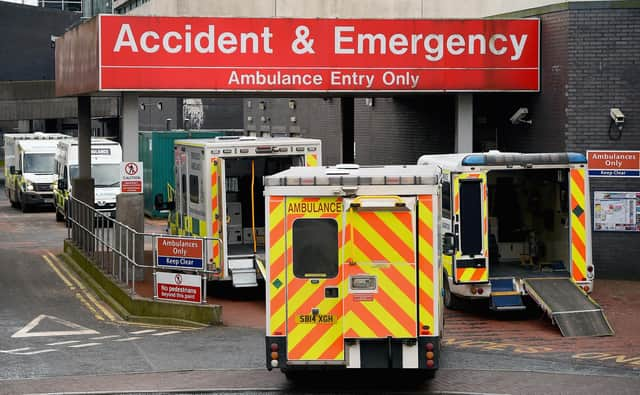NHS in Scotland is broken and all the staff I know are working on an escape plan – Dr Lailah Peel


And, with A&E waiting times reaching new records week by week, we were all particularly worried this Easter weekend.
But, Saturday wasn’t too bad, at least not initially and we all commented on how it had been the nicest shift in a long time. It didn’t last though.
Advertisement
Hide AdAdvertisement
Hide AdLengthy waits are the norm in A&Es across Scotland and have been for some time. On Easter Monday, my first patients were waiting to be transferred up to the ward for most of my 12-hour shift. Thankfully they remained relatively well, but that isn’t always the case.
I’ve seen the numbers of patients in our departments reach new peaks week to week. Typically, when this happened previously, we would divert ambulances to another A&E, but right now we’re all feeling these pressures all the time.
We just don’t have the staff to monitor that number of patients safely; we can’t repeat observations as often as we would like, we simply can’t keep eyes on all our patients all the time. And we just don’t have the space to see them, so short of examining patients in the corridor, they have to wait, and wait.
Waiting times have been getting worse since this time last year. In fact the number of eight and 12-hour bed waits in Scotland (hopefully) peaked in October last year, but still patients are lying on trolleys for days in some departments waiting to go to the ward.
It would be easy to think this is all because of Covid, and it is of course making things harder: every day it feels another colleague tests positive. But things have been getting worse and worse year on year for a while now.
In A&E we aim to get 95 per cent of our patients seen, treated and discharged, home or to a ward, within four hours. The last time that target was met in Scotland was July 2017. It was 66.2 per cent last week, the lowest since records began.
This isn’t because there are more patients coming through our doors: A&E attendances are actually down compared to pre-pandemic levels. It’s down to what we call exit block: we just can’t get patients out of our A&E departments.
Why? Latest estimates say we’re short at least 1,000 inpatient beds in Scotland and there’s a huge shortage of social-care provision. We need this to be able to discharge patients back into communities safely. We need to look at recruiting and retaining staff.
Advertisement
Hide AdAdvertisement
Hide AdIn A&E, we are short about 100 consultants and need twice as many registrars, yet we have nearly four junior doctors competing for every A&E training place. Without enough senior staff, who’s going to train them?
We simply don’t have the capacity. All across the NHS in Scotland, we’re struggling. The system is broken and it’s breaking us. We’ll keep giving it our all for as many patients as we can, as long as we can, but I don’t know anyone who isn’t thinking about a potential escape plan.
We all need better. You need better.
Dr Lailah Peel, chair of BMA Scotland’s Junior Doctor Committee and A&E doctor
A message from the Editor:
Thank you for reading this article. If you haven't already, please consider supporting our trusted, fact-checked journalism by taking out a digital subscription.
Comments
Want to join the conversation? Please or to comment on this article.
